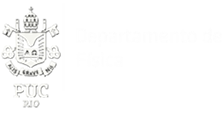Data / Hora
Date(s) - 17/08/2023
17:00 - 18:00
Categorias
COLÓQUIO DO DEPARTAMENTO DE FÍSICA
Recent Open Issues in Atomistic and Coarse-Grained Models of Phospholipids and Cholesterol
Prof. Dr. André Silva Pimentel
Department of Chemistry, PUC-Rio
17 de Agosto – às 17h – sala 776L
This presentation intends to show recent open issues of using atomistic and coarse-grained models of phospholipids and cholesterol in molecular dynamics simulation. It reviews the current knowledge of the comparison between experimental and simulation data of structural and physical chemical properties that depend on the hydrophilic and hydrophobic behavior of the amphiphilic molecules. The lipophilicity of cholesterol and 1,2-dipalmitoyl-sn-glycero-3-phosphatidylcholine (DPPC) models was investigated by using atomistic and coarse-grained molecular dynamics and sampling methods such as umbrella sampling and thermodynamic integration. The previous standard atomistic and coarse-grained of cholesterol and DPPC models in literature are more hydrophobic than predicted in experiments. Consequently, the tuned cholesterol and DPPC models are expected to have a realistic behavior in terms of its hydrophobicity and structural characteristics. This shows the significance of systematic optimization of the lipophilicity for developing atomistic and coarse-grained models of important biomolecules with complicated molecular structures and hydrophobic character like cholesterol and DPPC. Also, it is important to mention that our study reinforces the importance of developing new water models that reproduce experimental surface tensions to reconcile the water-water and water-DPPC non-bonded interactions and the existing discrepancy between experimental measurements of amphiphilic molecules. It raises two important open questions: Is the experimental octanol-water partition coefficient of DPPC reliable? Or is its calculation only accurate using specific water models? With respect to the experimental measurements, there may be non-treated aspects such as the formation of aggregates in aqueous phase and limit of detection of the applied method. And, in the calculation, some effects are not possible to be considered in a correct way or a viable time such as calculating quantum effects, sampling all conformations, considering phase transitions, and correctly evaluating the intermolecular forces to estimate an accurate surface tension. These open questions are indeed important in many areas of scientific applications and industry such as biophysics, surfactant, colloids, membranes, medicine, nanotechnology, and food and pharmaceutical industries, and so on.
This research is funded by CNPq, FAPERJ, and CAPES. It is part of the INCT Complex Fluids.
